Analyzing Classical Management Theories and Leadership Styles of Marriott International
VerifiedAdded on 2023/01/07
|11
|2630
|77
AI Summary
This document analyzes the current classical management theories and leadership styles of Marriott International, linking them to management theories and providing evidence of the company's organizational structure and culture. It also explains the roles of a leader and manager in the case study organization.
Contribute Materials
Your contribution can guide someone’s learning journey. Share your
documents today.
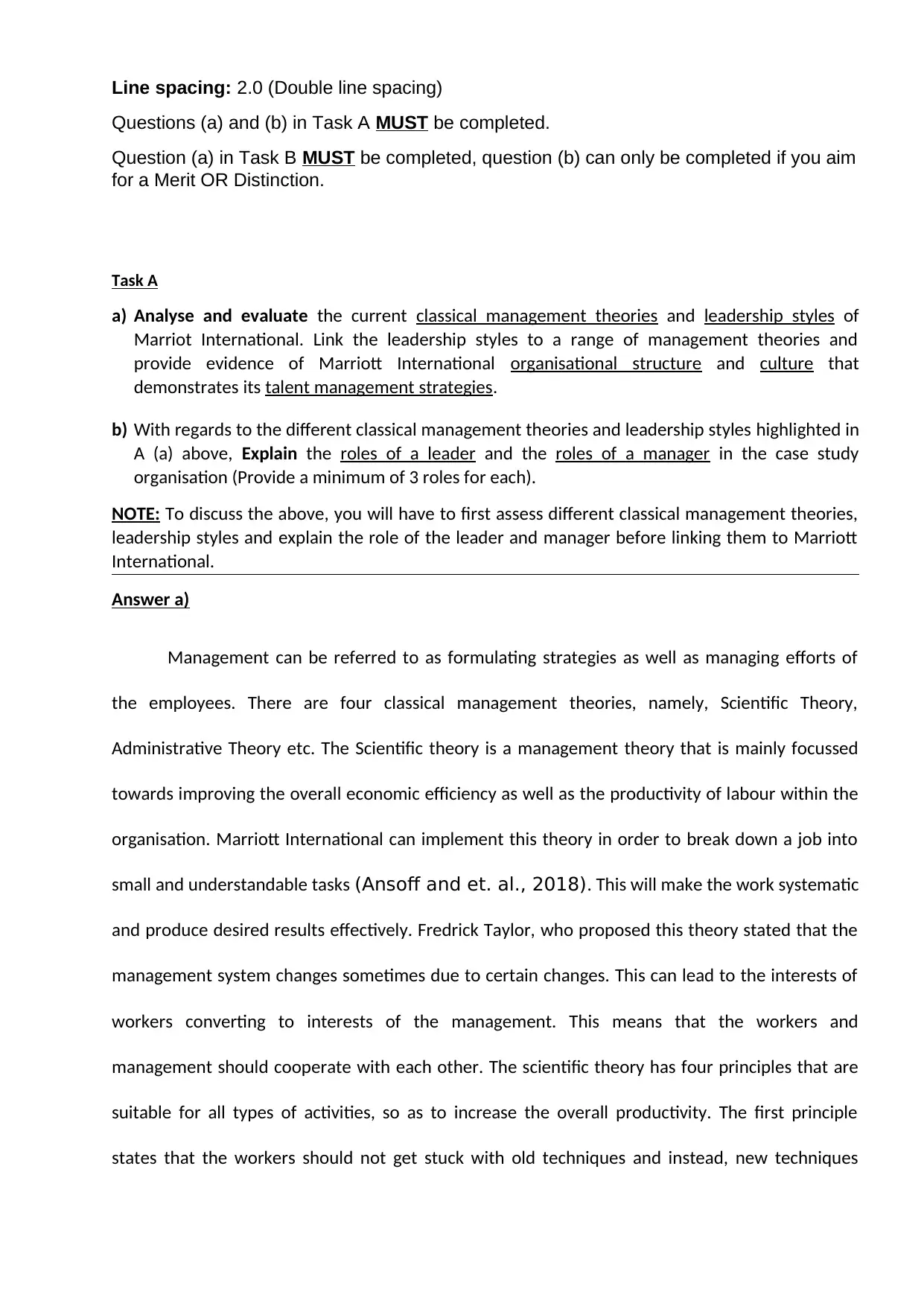
Line spacing: 2.0 (Double line spacing)
Questions (a) and (b) in Task A MUST be completed.
Question (a) in Task B MUST be completed, question (b) can only be completed if you aim
for a Merit OR Distinction.
Task A
a) Analyse and evaluate the current classical management theories and leadership styles of
Marriot International. Link the leadership styles to a range of management theories and
provide evidence of Marriott International organisational structure and culture that
demonstrates its talent management strategies.
b) With regards to the different classical management theories and leadership styles highlighted in
A (a) above, Explain the roles of a leader and the roles of a manager in the case study
organisation (Provide a minimum of 3 roles for each).
NOTE: To discuss the above, you will have to first assess different classical management theories,
leadership styles and explain the role of the leader and manager before linking them to Marriott
International.
Answer a)
Management can be referred to as formulating strategies as well as managing efforts of
the employees. There are four classical management theories, namely, Scientific Theory,
Administrative Theory etc. The Scientific theory is a management theory that is mainly focussed
towards improving the overall economic efficiency as well as the productivity of labour within the
organisation. Marriott International can implement this theory in order to break down a job into
small and understandable tasks (Ansoff and et. al., 2018). This will make the work systematic
and produce desired results effectively. Fredrick Taylor, who proposed this theory stated that the
management system changes sometimes due to certain changes. This can lead to the interests of
workers converting to interests of the management. This means that the workers and
management should cooperate with each other. The scientific theory has four principles that are
suitable for all types of activities, so as to increase the overall productivity. The first principle
states that the workers should not get stuck with old techniques and instead, new techniques
Questions (a) and (b) in Task A MUST be completed.
Question (a) in Task B MUST be completed, question (b) can only be completed if you aim
for a Merit OR Distinction.
Task A
a) Analyse and evaluate the current classical management theories and leadership styles of
Marriot International. Link the leadership styles to a range of management theories and
provide evidence of Marriott International organisational structure and culture that
demonstrates its talent management strategies.
b) With regards to the different classical management theories and leadership styles highlighted in
A (a) above, Explain the roles of a leader and the roles of a manager in the case study
organisation (Provide a minimum of 3 roles for each).
NOTE: To discuss the above, you will have to first assess different classical management theories,
leadership styles and explain the role of the leader and manager before linking them to Marriott
International.
Answer a)
Management can be referred to as formulating strategies as well as managing efforts of
the employees. There are four classical management theories, namely, Scientific Theory,
Administrative Theory etc. The Scientific theory is a management theory that is mainly focussed
towards improving the overall economic efficiency as well as the productivity of labour within the
organisation. Marriott International can implement this theory in order to break down a job into
small and understandable tasks (Ansoff and et. al., 2018). This will make the work systematic
and produce desired results effectively. Fredrick Taylor, who proposed this theory stated that the
management system changes sometimes due to certain changes. This can lead to the interests of
workers converting to interests of the management. This means that the workers and
management should cooperate with each other. The scientific theory has four principles that are
suitable for all types of activities, so as to increase the overall productivity. The first principle
states that the workers should not get stuck with old techniques and instead, new techniques
Secure Best Marks with AI Grader
Need help grading? Try our AI Grader for instant feedback on your assignments.
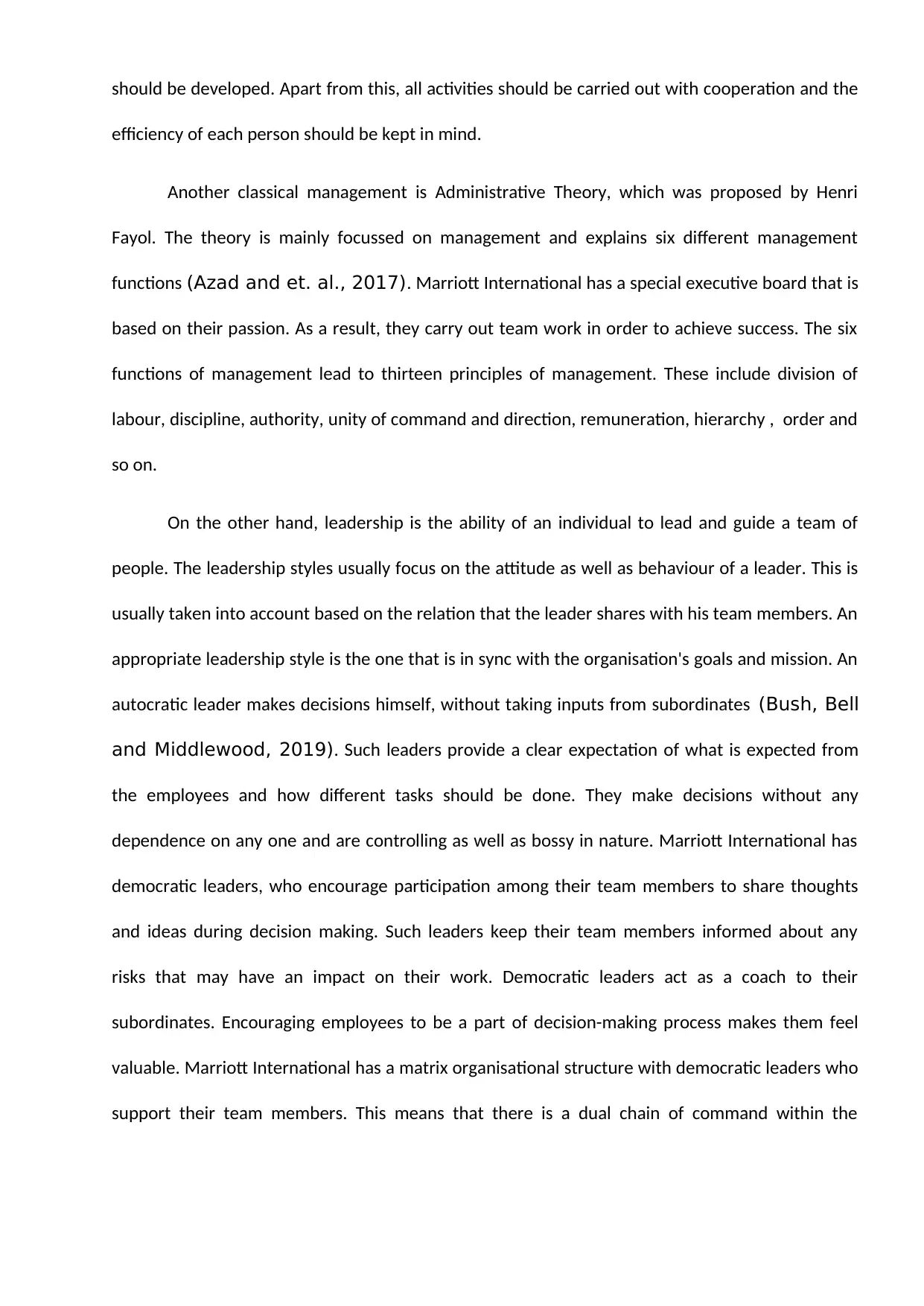
should be developed. Apart from this, all activities should be carried out with cooperation and the
efficiency of each person should be kept in mind.
Another classical management is Administrative Theory, which was proposed by Henri
Fayol. The theory is mainly focussed on management and explains six different management
functions (Azad and et. al., 2017). Marriott International has a special executive board that is
based on their passion. As a result, they carry out team work in order to achieve success. The six
functions of management lead to thirteen principles of management. These include division of
labour, discipline, authority, unity of command and direction, remuneration, hierarchy , order and
so on.
On the other hand, leadership is the ability of an individual to lead and guide a team of
people. The leadership styles usually focus on the attitude as well as behaviour of a leader. This is
usually taken into account based on the relation that the leader shares with his team members. An
appropriate leadership style is the one that is in sync with the organisation's goals and mission. An
autocratic leader makes decisions himself, without taking inputs from subordinates (Bush, Bell
and Middlewood, 2019). Such leaders provide a clear expectation of what is expected from
the employees and how different tasks should be done. They make decisions without any
dependence on any one and are controlling as well as bossy in nature. Marriott International has
democratic leaders, who encourage participation among their team members to share thoughts
and ideas during decision making. Such leaders keep their team members informed about any
risks that may have an impact on their work. Democratic leaders act as a coach to their
subordinates. Encouraging employees to be a part of decision-making process makes them feel
valuable. Marriott International has a matrix organisational structure with democratic leaders who
support their team members. This means that there is a dual chain of command within the
efficiency of each person should be kept in mind.
Another classical management is Administrative Theory, which was proposed by Henri
Fayol. The theory is mainly focussed on management and explains six different management
functions (Azad and et. al., 2017). Marriott International has a special executive board that is
based on their passion. As a result, they carry out team work in order to achieve success. The six
functions of management lead to thirteen principles of management. These include division of
labour, discipline, authority, unity of command and direction, remuneration, hierarchy , order and
so on.
On the other hand, leadership is the ability of an individual to lead and guide a team of
people. The leadership styles usually focus on the attitude as well as behaviour of a leader. This is
usually taken into account based on the relation that the leader shares with his team members. An
appropriate leadership style is the one that is in sync with the organisation's goals and mission. An
autocratic leader makes decisions himself, without taking inputs from subordinates (Bush, Bell
and Middlewood, 2019). Such leaders provide a clear expectation of what is expected from
the employees and how different tasks should be done. They make decisions without any
dependence on any one and are controlling as well as bossy in nature. Marriott International has
democratic leaders, who encourage participation among their team members to share thoughts
and ideas during decision making. Such leaders keep their team members informed about any
risks that may have an impact on their work. Democratic leaders act as a coach to their
subordinates. Encouraging employees to be a part of decision-making process makes them feel
valuable. Marriott International has a matrix organisational structure with democratic leaders who
support their team members. This means that there is a dual chain of command within the
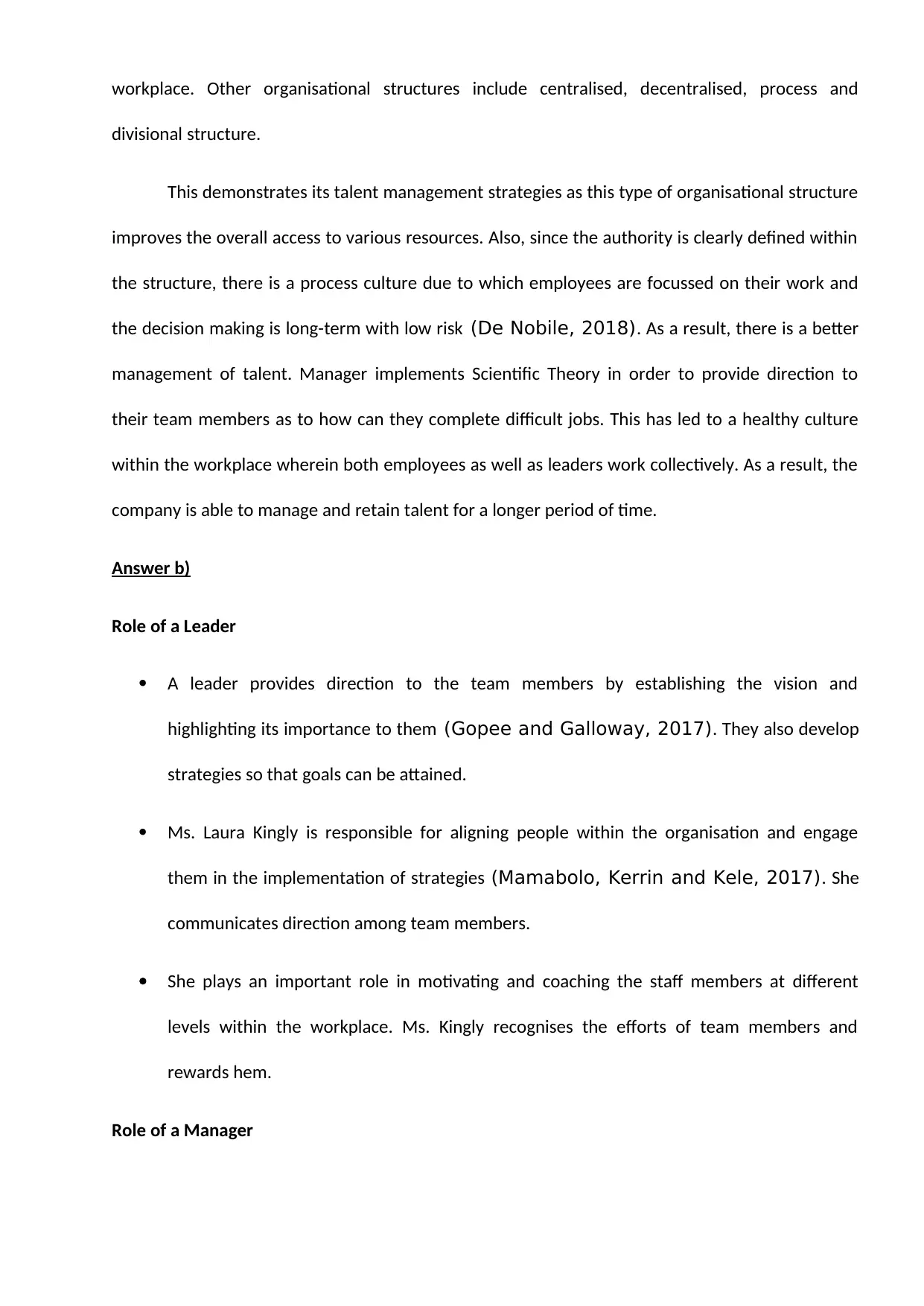
workplace. Other organisational structures include centralised, decentralised, process and
divisional structure.
This demonstrates its talent management strategies as this type of organisational structure
improves the overall access to various resources. Also, since the authority is clearly defined within
the structure, there is a process culture due to which employees are focussed on their work and
the decision making is long-term with low risk (De Nobile, 2018). As a result, there is a better
management of talent. Manager implements Scientific Theory in order to provide direction to
their team members as to how can they complete difficult jobs. This has led to a healthy culture
within the workplace wherein both employees as well as leaders work collectively. As a result, the
company is able to manage and retain talent for a longer period of time.
Answer b)
Role of a Leader
A leader provides direction to the team members by establishing the vision and
highlighting its importance to them (Gopee and Galloway, 2017). They also develop
strategies so that goals can be attained.
Ms. Laura Kingly is responsible for aligning people within the organisation and engage
them in the implementation of strategies (Mamabolo, Kerrin and Kele, 2017). She
communicates direction among team members.
She plays an important role in motivating and coaching the staff members at different
levels within the workplace. Ms. Kingly recognises the efforts of team members and
rewards hem.
Role of a Manager
divisional structure.
This demonstrates its talent management strategies as this type of organisational structure
improves the overall access to various resources. Also, since the authority is clearly defined within
the structure, there is a process culture due to which employees are focussed on their work and
the decision making is long-term with low risk (De Nobile, 2018). As a result, there is a better
management of talent. Manager implements Scientific Theory in order to provide direction to
their team members as to how can they complete difficult jobs. This has led to a healthy culture
within the workplace wherein both employees as well as leaders work collectively. As a result, the
company is able to manage and retain talent for a longer period of time.
Answer b)
Role of a Leader
A leader provides direction to the team members by establishing the vision and
highlighting its importance to them (Gopee and Galloway, 2017). They also develop
strategies so that goals can be attained.
Ms. Laura Kingly is responsible for aligning people within the organisation and engage
them in the implementation of strategies (Mamabolo, Kerrin and Kele, 2017). She
communicates direction among team members.
She plays an important role in motivating and coaching the staff members at different
levels within the workplace. Ms. Kingly recognises the efforts of team members and
rewards hem.
Role of a Manager
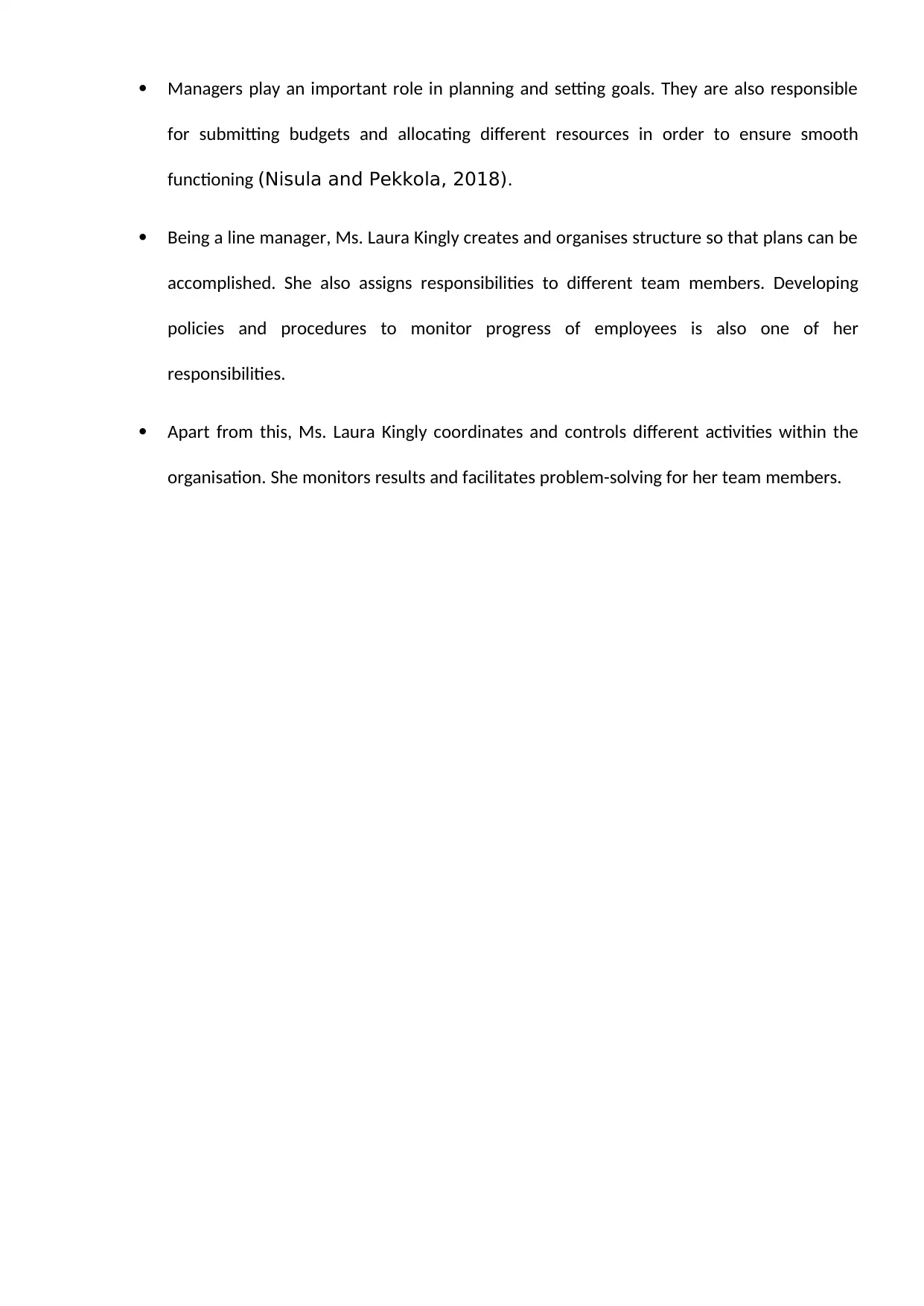
Managers play an important role in planning and setting goals. They are also responsible
for submitting budgets and allocating different resources in order to ensure smooth
functioning (Nisula and Pekkola, 2018).
Being a line manager, Ms. Laura Kingly creates and organises structure so that plans can be
accomplished. She also assigns responsibilities to different team members. Developing
policies and procedures to monitor progress of employees is also one of her
responsibilities.
Apart from this, Ms. Laura Kingly coordinates and controls different activities within the
organisation. She monitors results and facilitates problem-solving for her team members.
for submitting budgets and allocating different resources in order to ensure smooth
functioning (Nisula and Pekkola, 2018).
Being a line manager, Ms. Laura Kingly creates and organises structure so that plans can be
accomplished. She also assigns responsibilities to different team members. Developing
policies and procedures to monitor progress of employees is also one of her
responsibilities.
Apart from this, Ms. Laura Kingly coordinates and controls different activities within the
organisation. She monitors results and facilitates problem-solving for her team members.
Secure Best Marks with AI Grader
Need help grading? Try our AI Grader for instant feedback on your assignments.

DO NOT WRITE ON THIS PAGE
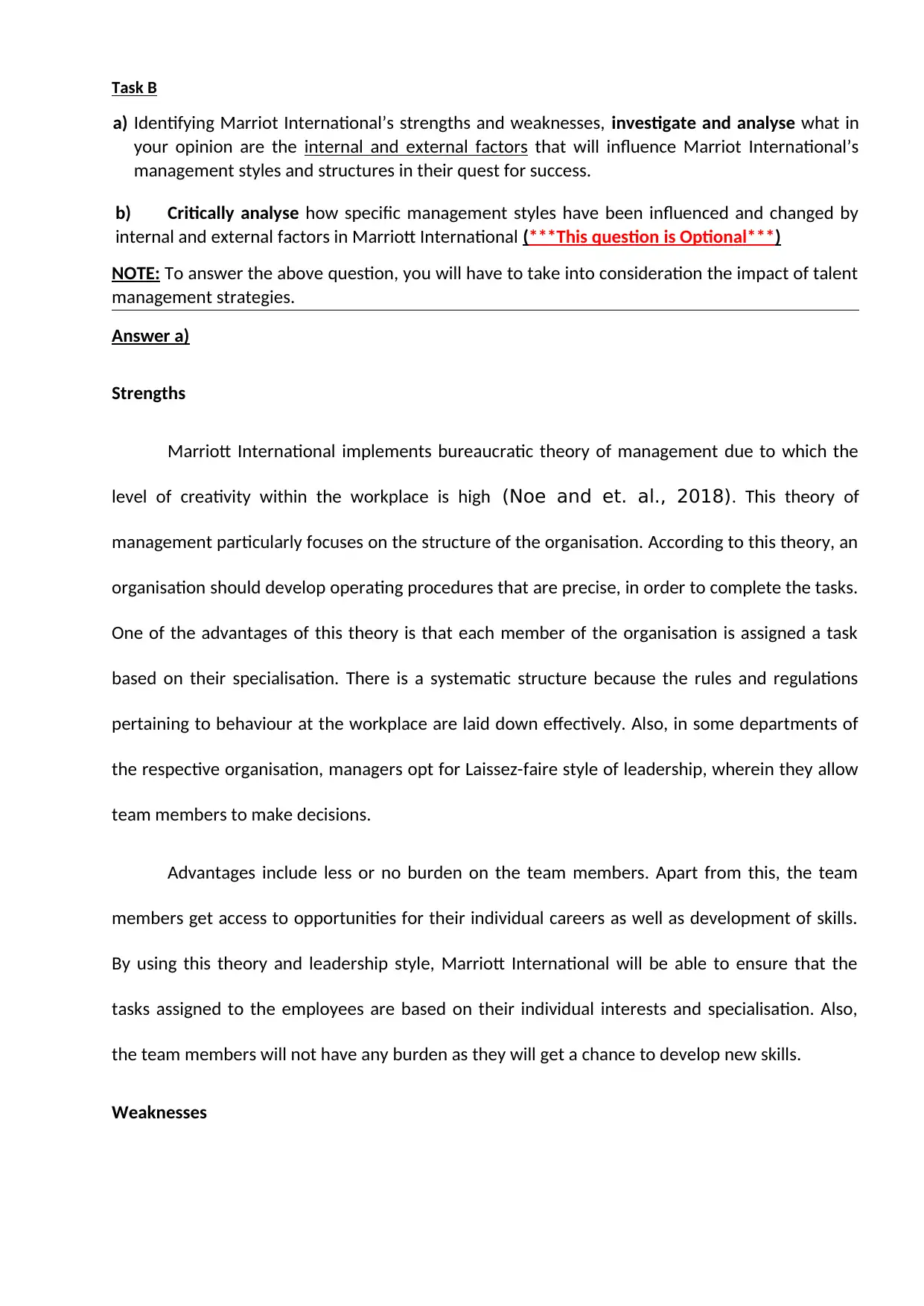
Task B
a) Identifying Marriot International’s strengths and weaknesses, investigate and analyse what in
your opinion are the internal and external factors that will influence Marriot International’s
management styles and structures in their quest for success.
b) Critically analyse how specific management styles have been influenced and changed by
internal and external factors in Marriott International (***This question is Optional***)
NOTE: To answer the above question, you will have to take into consideration the impact of talent
management strategies.
Answer a)
Strengths
Marriott International implements bureaucratic theory of management due to which the
level of creativity within the workplace is high (Noe and et. al., 2018). This theory of
management particularly focuses on the structure of the organisation. According to this theory, an
organisation should develop operating procedures that are precise, in order to complete the tasks.
One of the advantages of this theory is that each member of the organisation is assigned a task
based on their specialisation. There is a systematic structure because the rules and regulations
pertaining to behaviour at the workplace are laid down effectively. Also, in some departments of
the respective organisation, managers opt for Laissez-faire style of leadership, wherein they allow
team members to make decisions.
Advantages include less or no burden on the team members. Apart from this, the team
members get access to opportunities for their individual careers as well as development of skills.
By using this theory and leadership style, Marriott International will be able to ensure that the
tasks assigned to the employees are based on their individual interests and specialisation. Also,
the team members will not have any burden as they will get a chance to develop new skills.
Weaknesses
a) Identifying Marriot International’s strengths and weaknesses, investigate and analyse what in
your opinion are the internal and external factors that will influence Marriot International’s
management styles and structures in their quest for success.
b) Critically analyse how specific management styles have been influenced and changed by
internal and external factors in Marriott International (***This question is Optional***)
NOTE: To answer the above question, you will have to take into consideration the impact of talent
management strategies.
Answer a)
Strengths
Marriott International implements bureaucratic theory of management due to which the
level of creativity within the workplace is high (Noe and et. al., 2018). This theory of
management particularly focuses on the structure of the organisation. According to this theory, an
organisation should develop operating procedures that are precise, in order to complete the tasks.
One of the advantages of this theory is that each member of the organisation is assigned a task
based on their specialisation. There is a systematic structure because the rules and regulations
pertaining to behaviour at the workplace are laid down effectively. Also, in some departments of
the respective organisation, managers opt for Laissez-faire style of leadership, wherein they allow
team members to make decisions.
Advantages include less or no burden on the team members. Apart from this, the team
members get access to opportunities for their individual careers as well as development of skills.
By using this theory and leadership style, Marriott International will be able to ensure that the
tasks assigned to the employees are based on their individual interests and specialisation. Also,
the team members will not have any burden as they will get a chance to develop new skills.
Weaknesses
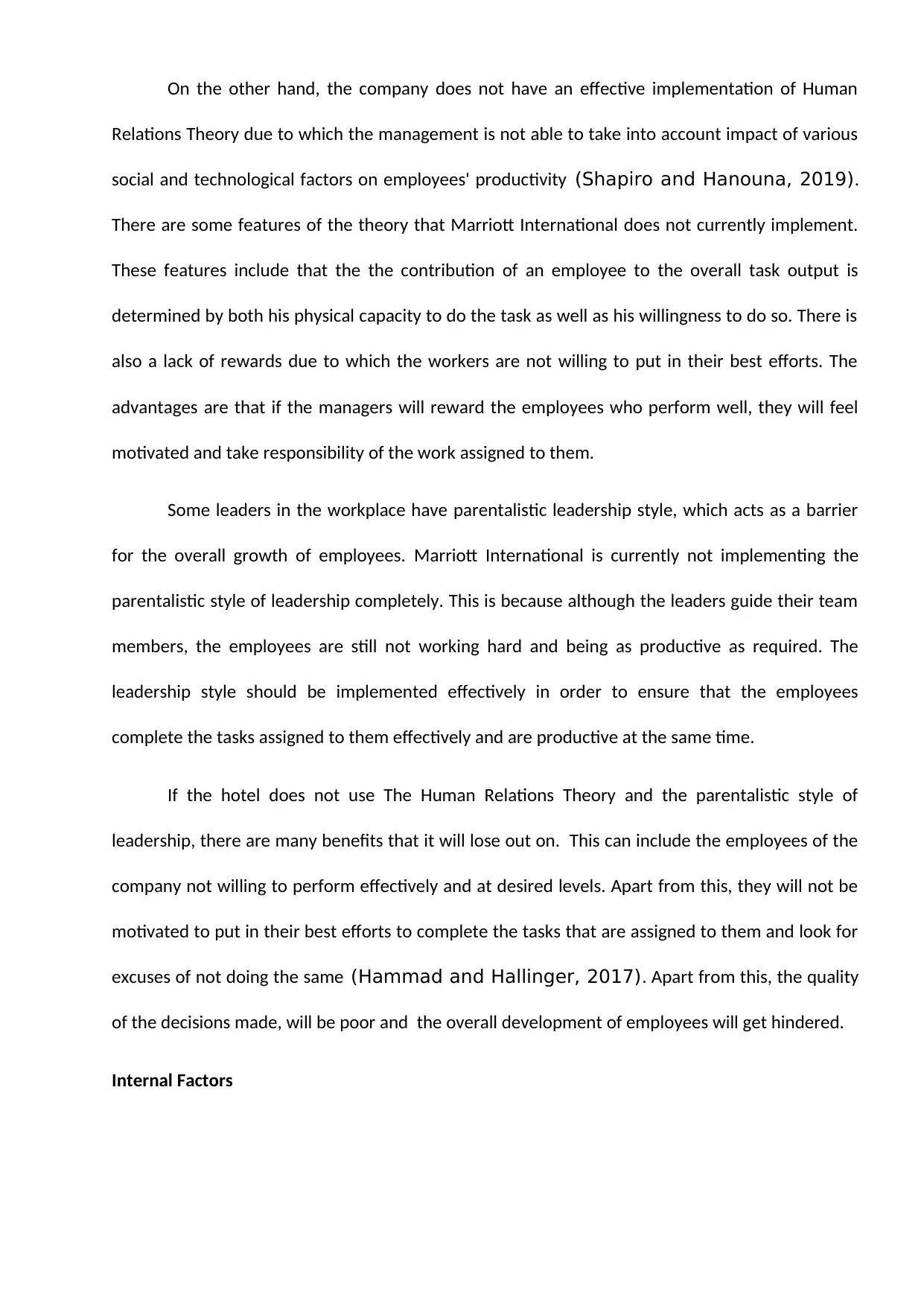
On the other hand, the company does not have an effective implementation of Human
Relations Theory due to which the management is not able to take into account impact of various
social and technological factors on employees' productivity (Shapiro and Hanouna, 2019).
There are some features of the theory that Marriott International does not currently implement.
These features include that the the contribution of an employee to the overall task output is
determined by both his physical capacity to do the task as well as his willingness to do so. There is
also a lack of rewards due to which the workers are not willing to put in their best efforts. The
advantages are that if the managers will reward the employees who perform well, they will feel
motivated and take responsibility of the work assigned to them.
Some leaders in the workplace have parentalistic leadership style, which acts as a barrier
for the overall growth of employees. Marriott International is currently not implementing the
parentalistic style of leadership completely. This is because although the leaders guide their team
members, the employees are still not working hard and being as productive as required. The
leadership style should be implemented effectively in order to ensure that the employees
complete the tasks assigned to them effectively and are productive at the same time.
If the hotel does not use The Human Relations Theory and the parentalistic style of
leadership, there are many benefits that it will lose out on. This can include the employees of the
company not willing to perform effectively and at desired levels. Apart from this, they will not be
motivated to put in their best efforts to complete the tasks that are assigned to them and look for
excuses of not doing the same (Hammad and Hallinger, 2017). Apart from this, the quality
of the decisions made, will be poor and the overall development of employees will get hindered.
Internal Factors
Relations Theory due to which the management is not able to take into account impact of various
social and technological factors on employees' productivity (Shapiro and Hanouna, 2019).
There are some features of the theory that Marriott International does not currently implement.
These features include that the the contribution of an employee to the overall task output is
determined by both his physical capacity to do the task as well as his willingness to do so. There is
also a lack of rewards due to which the workers are not willing to put in their best efforts. The
advantages are that if the managers will reward the employees who perform well, they will feel
motivated and take responsibility of the work assigned to them.
Some leaders in the workplace have parentalistic leadership style, which acts as a barrier
for the overall growth of employees. Marriott International is currently not implementing the
parentalistic style of leadership completely. This is because although the leaders guide their team
members, the employees are still not working hard and being as productive as required. The
leadership style should be implemented effectively in order to ensure that the employees
complete the tasks assigned to them effectively and are productive at the same time.
If the hotel does not use The Human Relations Theory and the parentalistic style of
leadership, there are many benefits that it will lose out on. This can include the employees of the
company not willing to perform effectively and at desired levels. Apart from this, they will not be
motivated to put in their best efforts to complete the tasks that are assigned to them and look for
excuses of not doing the same (Hammad and Hallinger, 2017). Apart from this, the quality
of the decisions made, will be poor and the overall development of employees will get hindered.
Internal Factors
Paraphrase This Document
Need a fresh take? Get an instant paraphrase of this document with our AI Paraphraser
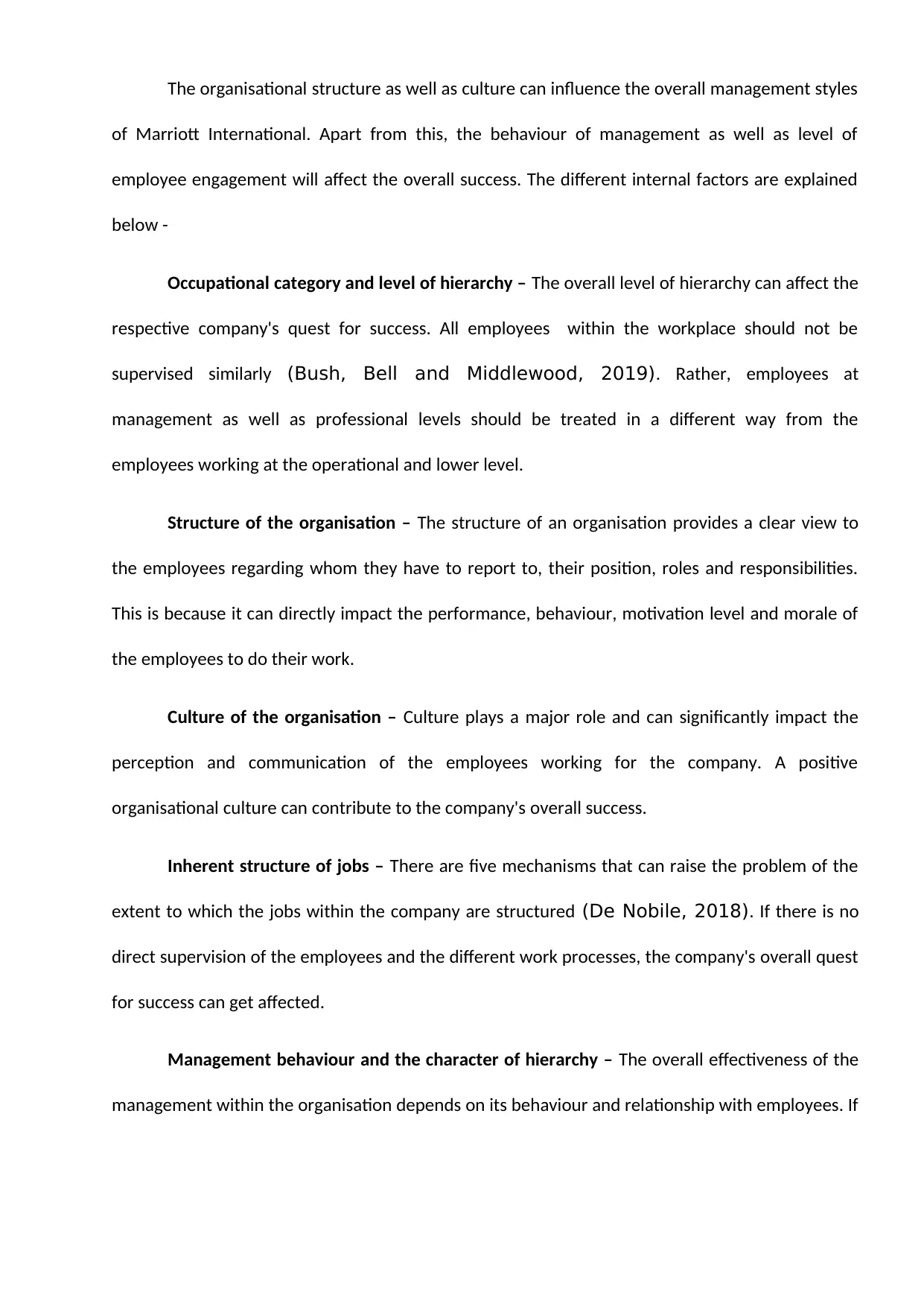
The organisational structure as well as culture can influence the overall management styles
of Marriott International. Apart from this, the behaviour of management as well as level of
employee engagement will affect the overall success. The different internal factors are explained
below -
Occupational category and level of hierarchy – The overall level of hierarchy can affect the
respective company's quest for success. All employees within the workplace should not be
supervised similarly (Bush, Bell and Middlewood, 2019). Rather, employees at
management as well as professional levels should be treated in a different way from the
employees working at the operational and lower level.
Structure of the organisation – The structure of an organisation provides a clear view to
the employees regarding whom they have to report to, their position, roles and responsibilities.
This is because it can directly impact the performance, behaviour, motivation level and morale of
the employees to do their work.
Culture of the organisation – Culture plays a major role and can significantly impact the
perception and communication of the employees working for the company. A positive
organisational culture can contribute to the company's overall success.
Inherent structure of jobs – There are five mechanisms that can raise the problem of the
extent to which the jobs within the company are structured (De Nobile, 2018). If there is no
direct supervision of the employees and the different work processes, the company's overall quest
for success can get affected.
Management behaviour and the character of hierarchy – The overall effectiveness of the
management within the organisation depends on its behaviour and relationship with employees. If
of Marriott International. Apart from this, the behaviour of management as well as level of
employee engagement will affect the overall success. The different internal factors are explained
below -
Occupational category and level of hierarchy – The overall level of hierarchy can affect the
respective company's quest for success. All employees within the workplace should not be
supervised similarly (Bush, Bell and Middlewood, 2019). Rather, employees at
management as well as professional levels should be treated in a different way from the
employees working at the operational and lower level.
Structure of the organisation – The structure of an organisation provides a clear view to
the employees regarding whom they have to report to, their position, roles and responsibilities.
This is because it can directly impact the performance, behaviour, motivation level and morale of
the employees to do their work.
Culture of the organisation – Culture plays a major role and can significantly impact the
perception and communication of the employees working for the company. A positive
organisational culture can contribute to the company's overall success.
Inherent structure of jobs – There are five mechanisms that can raise the problem of the
extent to which the jobs within the company are structured (De Nobile, 2018). If there is no
direct supervision of the employees and the different work processes, the company's overall quest
for success can get affected.
Management behaviour and the character of hierarchy – The overall effectiveness of the
management within the organisation depends on its behaviour and relationship with employees. If
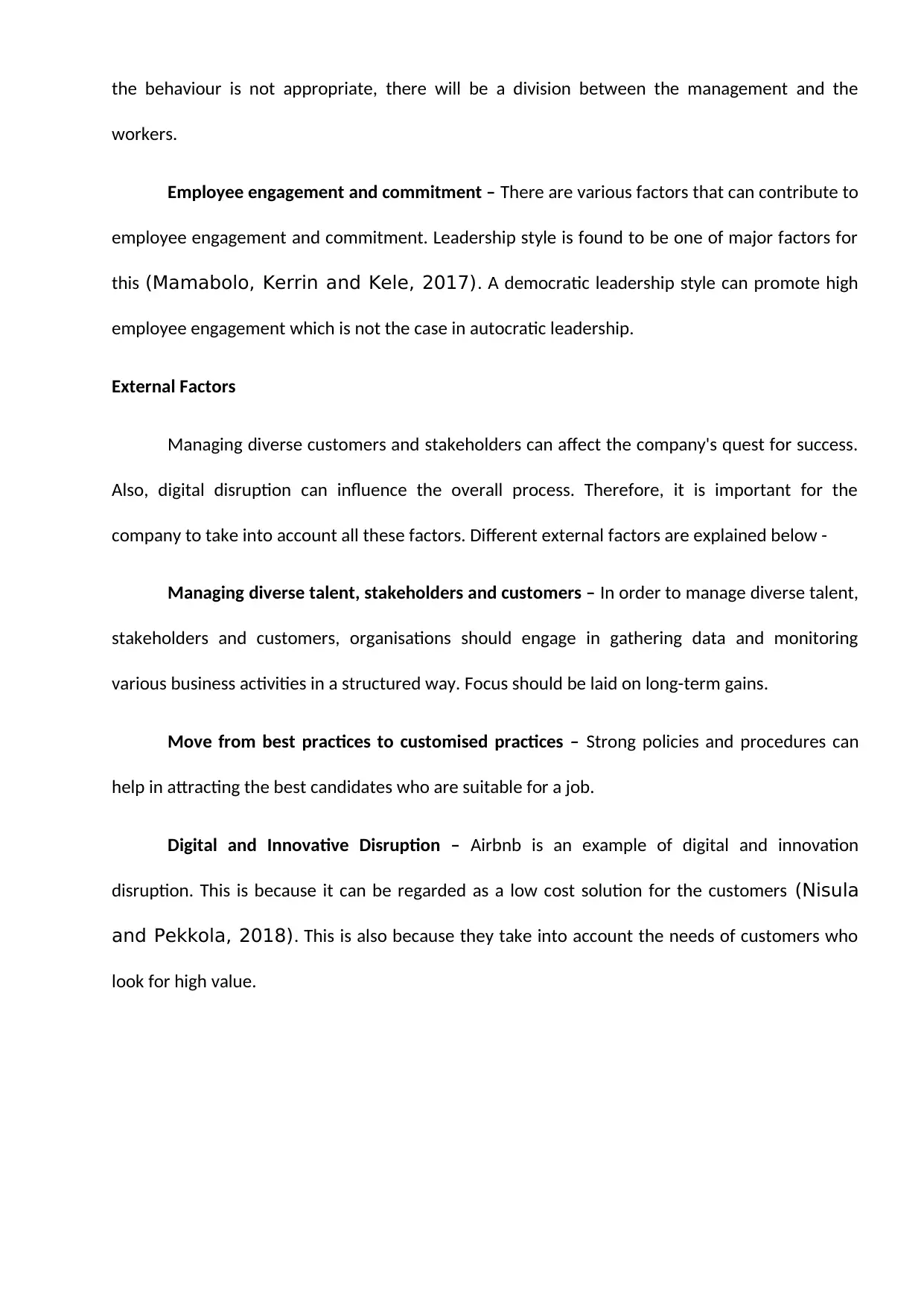
the behaviour is not appropriate, there will be a division between the management and the
workers.
Employee engagement and commitment – There are various factors that can contribute to
employee engagement and commitment. Leadership style is found to be one of major factors for
this (Mamabolo, Kerrin and Kele, 2017). A democratic leadership style can promote high
employee engagement which is not the case in autocratic leadership.
External Factors
Managing diverse customers and stakeholders can affect the company's quest for success.
Also, digital disruption can influence the overall process. Therefore, it is important for the
company to take into account all these factors. Different external factors are explained below -
Managing diverse talent, stakeholders and customers – In order to manage diverse talent,
stakeholders and customers, organisations should engage in gathering data and monitoring
various business activities in a structured way. Focus should be laid on long-term gains.
Move from best practices to customised practices – Strong policies and procedures can
help in attracting the best candidates who are suitable for a job.
Digital and Innovative Disruption – Airbnb is an example of digital and innovation
disruption. This is because it can be regarded as a low cost solution for the customers (Nisula
and Pekkola, 2018). This is also because they take into account the needs of customers who
look for high value.
workers.
Employee engagement and commitment – There are various factors that can contribute to
employee engagement and commitment. Leadership style is found to be one of major factors for
this (Mamabolo, Kerrin and Kele, 2017). A democratic leadership style can promote high
employee engagement which is not the case in autocratic leadership.
External Factors
Managing diverse customers and stakeholders can affect the company's quest for success.
Also, digital disruption can influence the overall process. Therefore, it is important for the
company to take into account all these factors. Different external factors are explained below -
Managing diverse talent, stakeholders and customers – In order to manage diverse talent,
stakeholders and customers, organisations should engage in gathering data and monitoring
various business activities in a structured way. Focus should be laid on long-term gains.
Move from best practices to customised practices – Strong policies and procedures can
help in attracting the best candidates who are suitable for a job.
Digital and Innovative Disruption – Airbnb is an example of digital and innovation
disruption. This is because it can be regarded as a low cost solution for the customers (Nisula
and Pekkola, 2018). This is also because they take into account the needs of customers who
look for high value.
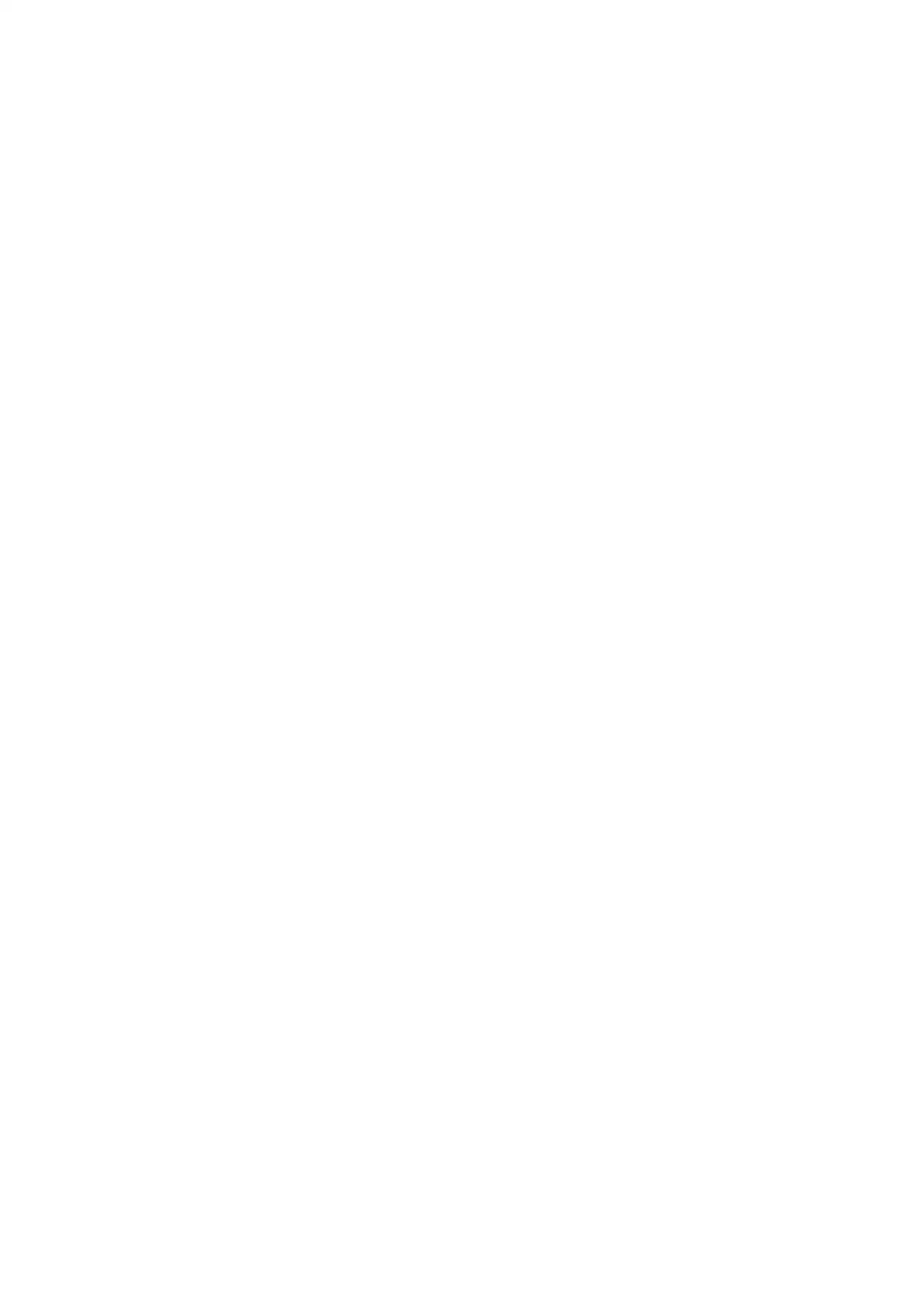
Secure Best Marks with AI Grader
Need help grading? Try our AI Grader for instant feedback on your assignments.
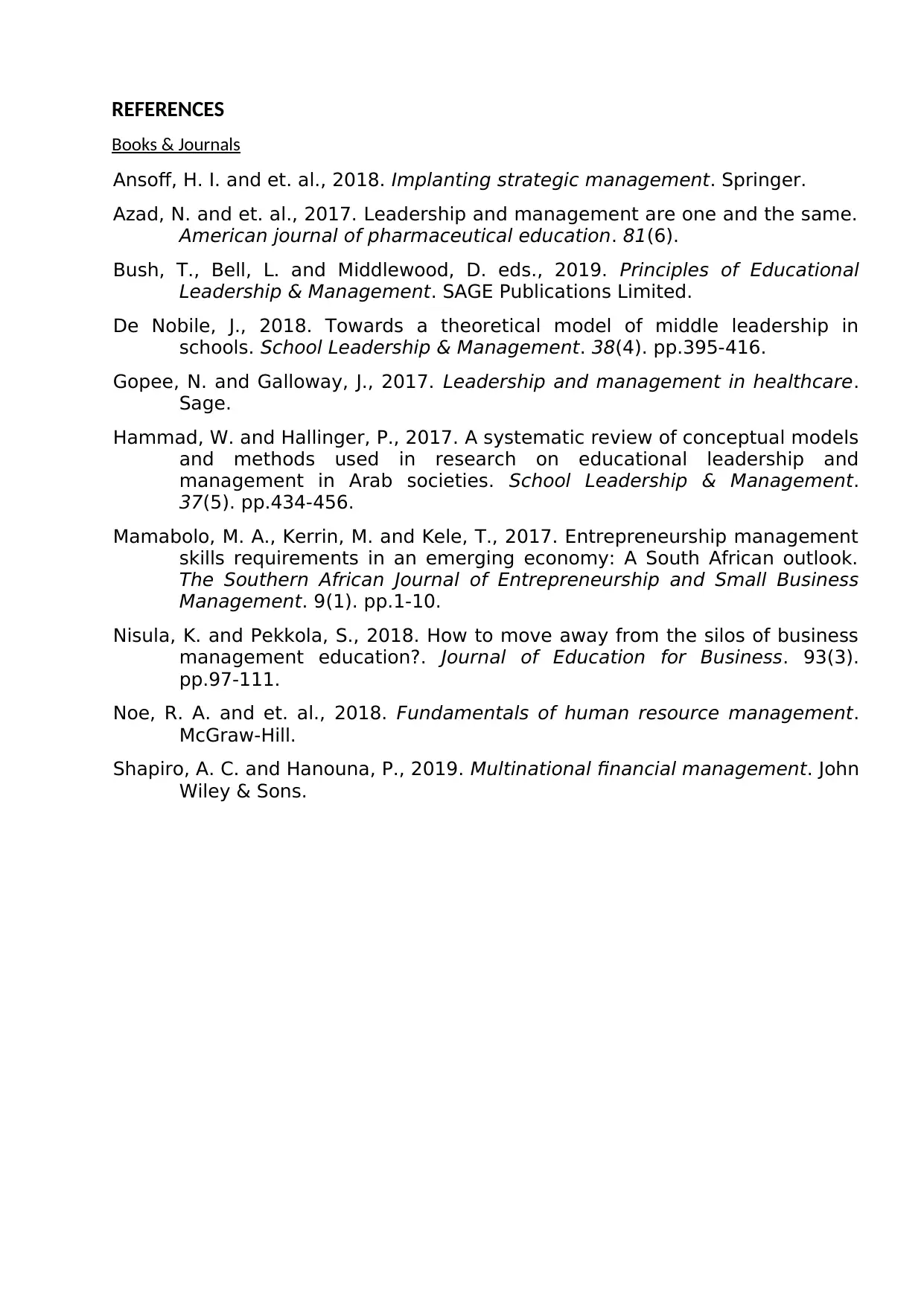
REFERENCES
Books & Journals
Ansoff, H. I. and et. al., 2018. Implanting strategic management. Springer.
Azad, N. and et. al., 2017. Leadership and management are one and the same.
American journal of pharmaceutical education. 81(6).
Bush, T., Bell, L. and Middlewood, D. eds., 2019. Principles of Educational
Leadership & Management. SAGE Publications Limited.
De Nobile, J., 2018. Towards a theoretical model of middle leadership in
schools. School Leadership & Management. 38(4). pp.395-416.
Gopee, N. and Galloway, J., 2017. Leadership and management in healthcare.
Sage.
Hammad, W. and Hallinger, P., 2017. A systematic review of conceptual models
and methods used in research on educational leadership and
management in Arab societies. School Leadership & Management.
37(5). pp.434-456.
Mamabolo, M. A., Kerrin, M. and Kele, T., 2017. Entrepreneurship management
skills requirements in an emerging economy: A South African outlook.
The Southern African Journal of Entrepreneurship and Small Business
Management. 9(1). pp.1-10.
Nisula, K. and Pekkola, S., 2018. How to move away from the silos of business
management education?. Journal of Education for Business. 93(3).
pp.97-111.
Noe, R. A. and et. al., 2018. Fundamentals of human resource management.
McGraw-Hill.
Shapiro, A. C. and Hanouna, P., 2019. Multinational financial management. John
Wiley & Sons.
Books & Journals
Ansoff, H. I. and et. al., 2018. Implanting strategic management. Springer.
Azad, N. and et. al., 2017. Leadership and management are one and the same.
American journal of pharmaceutical education. 81(6).
Bush, T., Bell, L. and Middlewood, D. eds., 2019. Principles of Educational
Leadership & Management. SAGE Publications Limited.
De Nobile, J., 2018. Towards a theoretical model of middle leadership in
schools. School Leadership & Management. 38(4). pp.395-416.
Gopee, N. and Galloway, J., 2017. Leadership and management in healthcare.
Sage.
Hammad, W. and Hallinger, P., 2017. A systematic review of conceptual models
and methods used in research on educational leadership and
management in Arab societies. School Leadership & Management.
37(5). pp.434-456.
Mamabolo, M. A., Kerrin, M. and Kele, T., 2017. Entrepreneurship management
skills requirements in an emerging economy: A South African outlook.
The Southern African Journal of Entrepreneurship and Small Business
Management. 9(1). pp.1-10.
Nisula, K. and Pekkola, S., 2018. How to move away from the silos of business
management education?. Journal of Education for Business. 93(3).
pp.97-111.
Noe, R. A. and et. al., 2018. Fundamentals of human resource management.
McGraw-Hill.
Shapiro, A. C. and Hanouna, P., 2019. Multinational financial management. John
Wiley & Sons.
1 out of 11
Related Documents
Your All-in-One AI-Powered Toolkit for Academic Success.
+13062052269
info@desklib.com
Available 24*7 on WhatsApp / Email
![[object Object]](/_next/static/media/star-bottom.7253800d.svg)
Unlock your academic potential
© 2024 | Zucol Services PVT LTD | All rights reserved.





